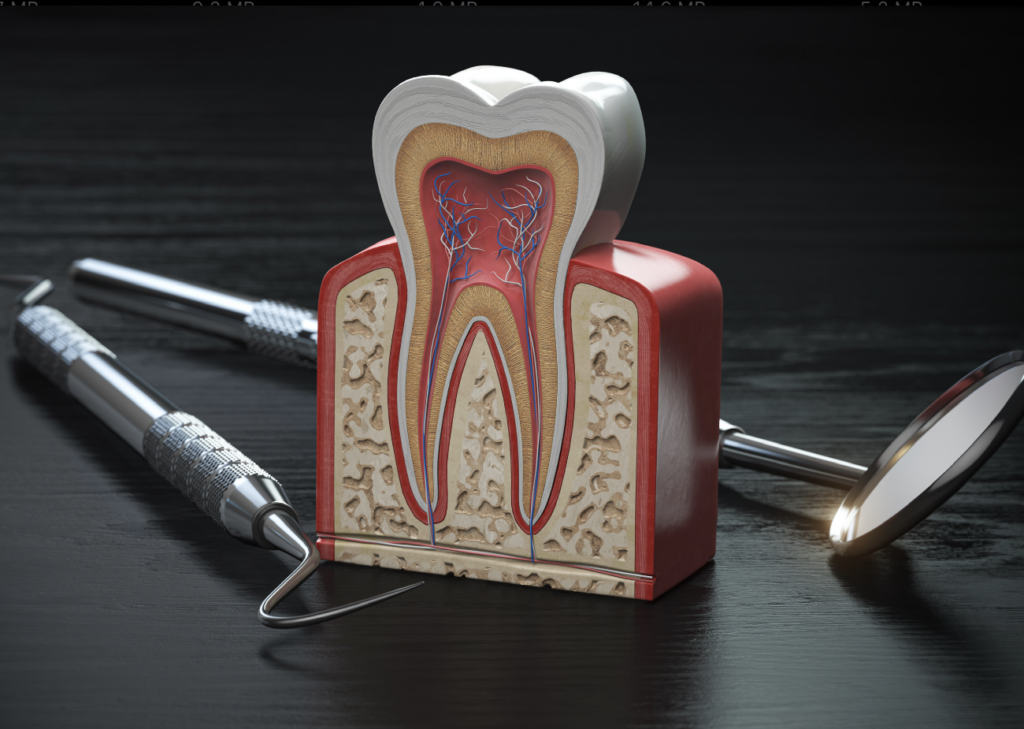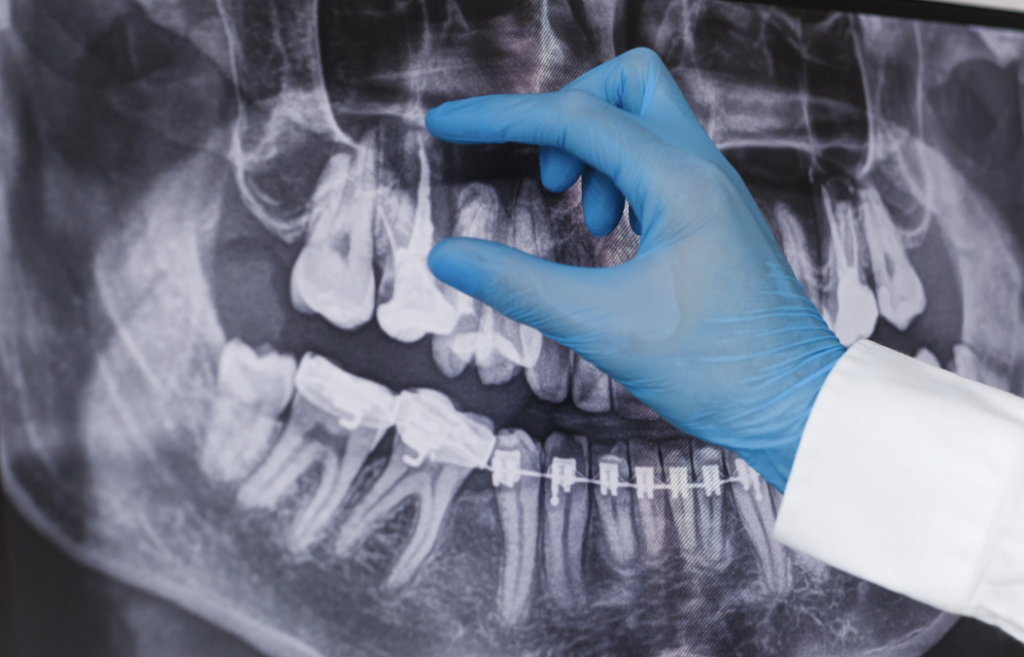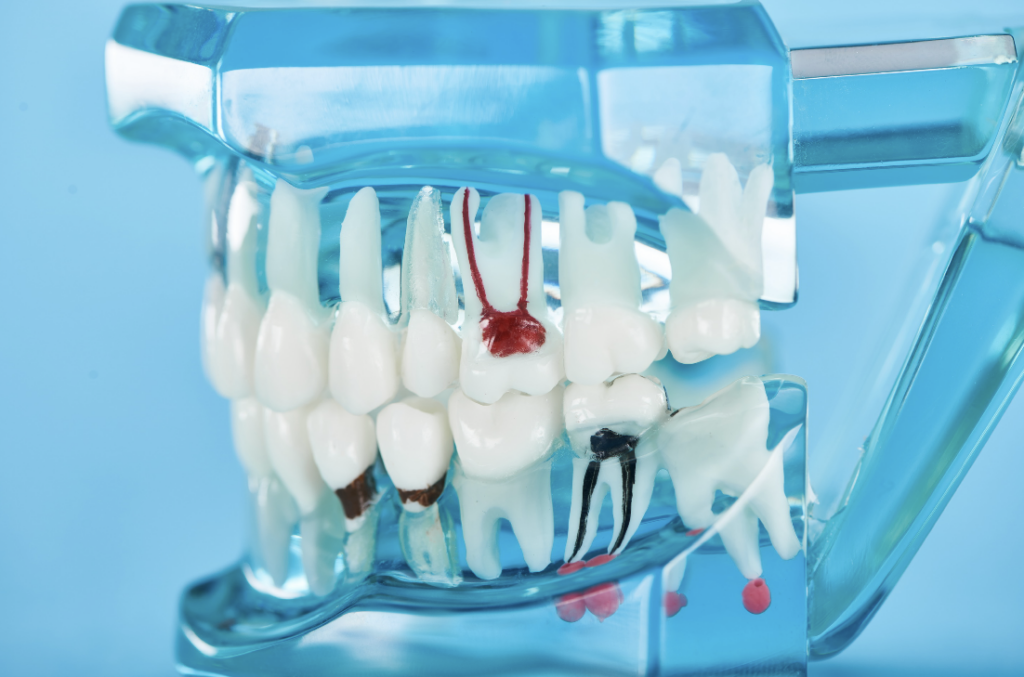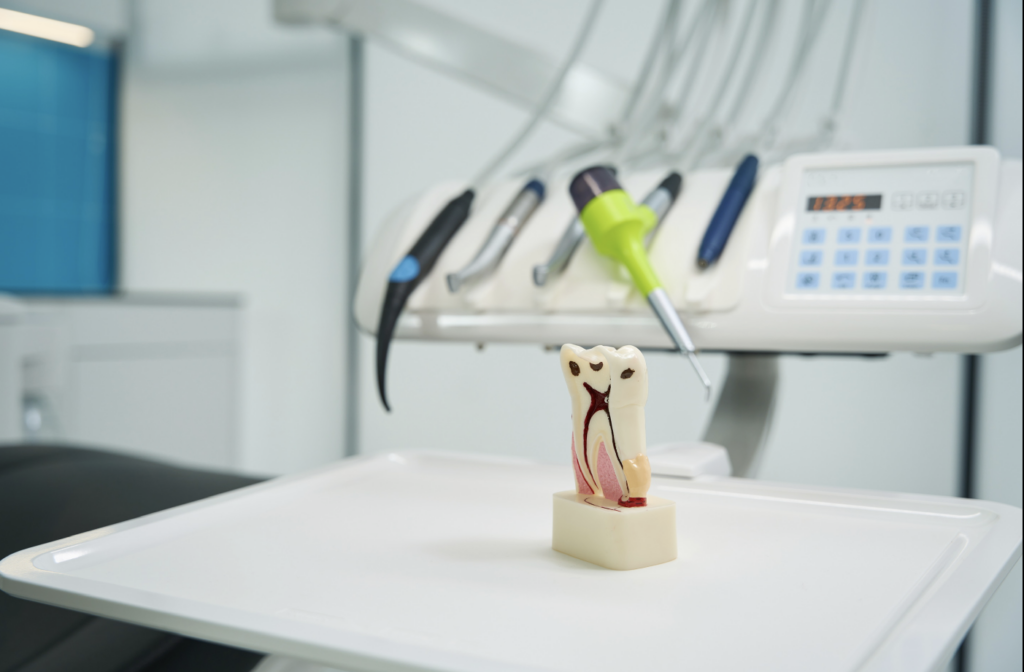Intro
Root Canal Treatment Procedure is used to treat a diseased or injured tooth. The term “root canal” comes from the hollow space inside a tooth that looks like a pipe (root). It is made up of many complex parts, which include the crown, root, nerve, blood supply, infection, and gums. Every tooth has a crown and an invisible structure called a root underneath the gums. At first, it may seem like a simple drilling process to access the infected area by ending the sharp pain. But in reality, this procedure requires lots of effort from highly skilled dentists who will have to go through multiple steps (which are listed below) to successfully cure your damaged teeth.
A root canal is a procedure performed on a tooth to save it from infection. Tooth decay and some diseases of the jawbone, such as osteomyelitis, can cause pain and damage inside the tooth. The pulp in a tooth includes nerves, blood vessels, and connective tissue. If bacteria get into the pulp, it can cause pain, swelling, and severe infection throughout your jawbone. If you’re wondering what is a root canal treatment you’ve come to the right place! In this article, we’ll talk about everything there is to know about root canal treatments, including how they work, who does them, and what happens after one.

Different parts of a tooth
The three layers of a tooth are the external, internal, and pulp.
The external layer is called enamel. It is the hardest part of our teeth. The second layer is dentin, which is more complex than enamel but not as hard as cementum. The cementum is the third layer that surrounds the root of our teeth.
The pulp is the live part of the tooth, and it lies inside the tooth cavity. It contains blood vessels, nerves, and connective tissue. Pulp has a very important role in maintaining the health of teeth because it produces new teeth cells when needed.
The role of the pulp includes arteries, veins, and nerves which supply blood to the pulp tissue. Nerves carry messages from pulp tissue to the brain.
The pulp is sterile, meaning there are no bacteria or viruses in the pulp tissue.
What is a root canal?
The hidden part of the tooth is called the root. Inside the roots of a tooth, there is a canal. Inside this canal, there is live tissue. If this tissue is contaminated or exposed, or infected, it needs to be removed. The process of eliminating the live tissue from the tooth and sealing it is called root canal treatment.
Root canal treatment involves removing all infected material from inside your tooth, cleaning out the nerve chamber, and filling it with an inert material to maintain its shape and size. This process can be done in two different ways: endodontic therapy or surgical therapy.

The first type of treatment uses rubber-dam isolation (a rubber dam is a thin barrier that isolates your mouth from the dental instruments so that any bacteria on them does not get into your bloodstream). The second type requires general anesthesia (putting you to sleep) so that you do not feel any pain during surgery.”
What are the indications for a root canal treatment?
If you experience any of the following symptoms, you may be suffering from an infected tooth:
- pain that is not relieved by over-the-counter pain relievers like ibuprofen or acetaminophen
- swelling around the tooth
- neck pain
- drainage from your tooth or gums
- heat radiating from your mouth

Root canal treatment is necessary when the pulp of a tooth becomes infected. The pulp is located in the center of the tooth and contains nerves, connective tissue, and blood vessels. When bacteria get into the pulp through cracks in the enamel, it can cause inflammation and infection.
Root canal treatment is usually recommended if you experience pain or sensitivity in your teeth, especially when eating hot or cold foods. Your dentist will likely recommend an x-ray to check for signs of infection and determine whether you need a root canal.
The alternative to root canal treatment is the extraction of the affected tooth. If you have pain that does not go away with medication or other treatments, it’s best to see your dentist as soon as possible for an evaluation of your options for treatment.

The Root Canal Process
Root canal treatment is a procedure that involves removing the nerve and pulp tissue inside your tooth, cleaning and sealing the empty space, and restoring the tooth.
The first step in root canal treatment is to open up the tooth using a drill or an electric file. The dentist will then be able to access the pulp and roots of your tooth. This may involve removing some or all of your natural tooth structure.
Next, any live tissue will be removed from inside the root canals, as well as any bacteria, calculus (tartar), or other materials that have built up over time. The inside of each root canal is cleaned and disinfected with an antimicrobial solution before being sealed with filling material. Finally, after all the fillings are placed into position, the top of your tooth is restored to look normal again!
What Needs to be done After Root Canal Treatment?
After a root canal treatment, the tooth needs to be restored and protected.
Since a lot of the tooth structure is removed during the process, a crown is usually needed to protect the remaining tooth structure. This can be done by placing a filling or placing a crown over the top of it.
A filling is used when only a small amount of decay has occurred within the tooth. A filling can be made out of many different materials, including composite (tooth-colored), amalgam (silver), gold, or porcelain fused to metal. The type of material used depends on several factors, including cost, longevity, appearance, and location on the tooth.

A crown consists of three parts: an impression, a temporary crown, and a permanent one. An impression is taken and sent to a laboratory where an exact duplicate will be made for your new crown. It may take anywhere from two weeks to six months for your custom-made crown to arrive at your dentist’s office, depending on where you live and what kind of insurance you have coverage under (if any).
Post-Op Instruction After Root Canal Therapy?
After root canal treatment, you will need to take anti-inflammatory medications for up to six months. Be careful with the temporary filling, and get the tooth restored with a permanent restoration, like a crown, as soon as possible.
What is the Cost of a Root Canal?
The cost of root canal treatment varies wildly, depending on the tooth’s location and the number of roots involved. The complexity of the procedure will also affect the cost. The specialty of the dentists offering this treatment will also affect its price; a specialist will charge more than a general dentist. Finally, the practice’s location may impact pricing since some cities or states have higher costs of living than others.
Typically, root canal treatments are anywhere from $300 for a front tooth to $2,000 for retreating a molar by a specialist.

How to Prevent Root Canal Treatments?
Regular checkups and cleanings at a dentist will help prevent you from needing a root canal in the first place. Good oral hygiene is essential for avoiding cavities, so flossing and brushing your teeth daily will help keep them healthy. It’s also essential to avoid drinking sugary drinks or foods that can cause cavities.
However, if you get a cavity, there are ways to avoid root canal treatment. First, make sure that you go to the dentist regularly so they can spot any problems early on before they become severe enough to require costly treatments like root canal therapy or crowns (which are both more expensive than getting regular checkups).
Overall, root canals are complex and cause anxiety. It is worth trying to avoid them when possible. But if you need one, the new technologies available today have made the procedure much more tolerable and easier to manage.



